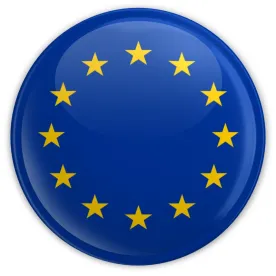This past week, Pfizer-BioNTech and AstraZenca announced positive news on the coronavirus vaccine front, welcoming news particularly as COVID-19 cases continue to rise in the United States and other parts of the world. The United States’ (US) Operation Warp Speed announced another agreement that would provide $1.95 billion for the production and nationwide delivery of the first 100 million doses of the vaccine by Pfizer-BioNTech. Meanwhile the European Union (EU) sealed the deal on an economic recovery plan and budget; the United Kingdom (UK) announced further efforts to help with its recovery from the pandemic. US Secretary of State Mike Pompeo was in London and Copenhagen at the start of last week, discussing mutual concerns and strengthening cooperation. The EU and UK also continue to discuss a path forward for the UK’s exit from the bloc.
Topics covered in this report include: vaccine update, EU recovery fund deal, UK economic recovery/climate change package, as well as UK-US, US-EU and EU-UK trade talks updates.
Vaccines Update
On Wednesday, 22 July, the US Department of Health and Human Services (HHS) and the Department of Defense, under the aegis of Operation Warp Speed, announced an agreement with US-based Pfizer Inc. and BioNTech for large-scale production of 100 million doses of a COVID-19 vaccine (BNT162) in the United States. The US Government also has the right to acquire an additional 500 million doses. Subject to a successful Phase 3 clinical trial and if the product receives Emergency Use Authorization (EUA) or licensure from the US Food and Drug Administration (FDA) the company could begin nationwide delivery of vaccine doses within the United States possibly as soon as the fourth quarter of 2020. HHS Secretary Alex Azar said of the new agreement:
Expanding Operation Warp Speed’s diverse portfolio by adding a vaccine from Pfizer and BioNTech increases the odds that we will have a safe, effective vaccine as soon as the end of this year.”
The Pfizer-BioNTech vaccine development program is evaluating at least four vaccine candidates, with (BNT162b1 and BNT162b2) having received Fast Track designation from the FDA, which was predicated on preliminary data from Phase 1/2 studies in the United States and Germany, along with animal immunogenicity studies. According to Pfizer:
The early data demonstrates that BNT162b1 is able to produce neutralizing antibodies in humans at or above the levels observed in the plasma from patients who have recovered from COVID-19, and this was shown at relatively low dose levels.”
Pfizer and BioNTech remain on track to begin an anticipated Phase 2b/3 safety and efficacy trial this coming week, toward seeking regulatory review as early as October 2020. If EUA is granted, the companies expect to manufacture up to 100 million doses by the end of 2020 and potentially more than 1.3 billion doses by the end of 2021. Americans are to receive the coronavirus vaccine at no out-of-pocket cost. Pfizer and BioNTech have also provided an expression of interest for possible supply to the COVAX Facility, a mechanism established by Gavi, the Vaccine Alliance, the Coalition for Epidemic Preparedness Innovations (CEPI) and World Health Organization (WHO), which would grant other governments access to a portfolio of COVID-19 vaccines.
Meanwhile, early results of a Phase 1/2 trial of a vaccine developed by the University of Oxford and AstraZeneca published by The Lancet on Monday, 20 July, also reflect it is safe and induces an immune response. Phase 2/3 trials are currently underway in Brazil, South Africa, and the United Kingdom. AstraZeneca says it has secured capacity to produce 2 billion doses of the vaccine, once a dose has been determined and approval granted.
On Friday, 24 July, President Trump provided an update on coronavirus vaccine efforts from the US perspective during remarks ahead of signing four Executive Orders (E.O.s) related to lowering drug pricing for Americans. He said the US Government has secured 90 percent of the supply of remdesivir, a therapeutic drug produced by Gilead Sciences for treating COVID-19 patients. With respect to the new E.O.s, the fourth order (text of which has yet to be released publicly) focuses on most favored nations (MFN) and their favored, lower drug pricing scheme with pharmaceutical companies. The United States currently does not receive MFN drug pricing preference; the E.O., which is set to go into effect at midnight on 24 August, seeks to obtain MFN status for the United States. The President explained that the goal is to make other countries “pay their fair share”, rather than the US paying the bulk so other countries can have reduced costs on prescription medication. President Trump added that he will be meeting with pharmaceutical company executives this coming week (Tuesday, 28 July) and listening to their proposals to lower drug prices for Americans, as the pharmaceutical industry seeks to avert the fourth E.O. from going into effect.
On Monday, 27 July, US Vice President Mike Pence will travel to Miami, Florida, to mark the beginning of Phase III trials for a coronavirus vaccine. At the University of Miami, the Vice President is expected to participate in a roundtable with university leadership and researchers on the coronavirus vaccine progress, before participating in a press briefing.
EU Recovery Fund Deal
After a marathon EU Summit, the EU27 Heads of State reached a deal on 21 July on the seven-year EU budget, the Multiannual Financial Framework (MFF) and the Next Generation EU Recovery Fund, which aims to support the recovery and resilience of the Member States economies in fallout of the COVID-19 pandemic. The MFF was agreed at a slightly lower amount than originally proposed by the European Commission from €1.1 trillion (US$ 1.28 trillion) to €1,074.3 billion (US$ 1.25 trillion).
Agreed in the originally proposed amount, the Next Generation EU Recovery Instrument would include €750 billion (US$ 874.2 billion). The Funds will be gathered by the European Commission, which would borrow the funds on the capital markets. Nevertheless, the attribution of the funds has been altered from the original Commission proposal, with €360 billion (US$ 419.6 billion) allocated to loans and €390 billion (US$ 454.5 billion) in grants. These will be disbursed to Member States via the EU’s existing instruments and programs. The borrowing activity will last until the end of 2026 and the repayment would be scheduled until the end of 2058.
The Next Generation EU Fund would also be repaid through the Own Resources system (an EU system that ensures a continuous flow of EU revenues which finance the EU budget), which would in part developed in the coming years. According to the deal, a new own resource based on the weight of non-recycled plastic packaging waste will be introduced from 1 January 2021, as a revenue source from national contribution (according to the legislative proposal currently under negotiation, this would include a €0.80/kg quota). Next to that, the European Commission plans to propose a carbon border adjustment mechanism and a digital levy to be introduced at the latest by 1 January 2023. Additional initiatives that would contribute to the repayment of the Next Generation EU are a revised Emission Trading Scheme, extended to the maritime and aviation sectors, and an own resource on a Financial Transaction Tax.
Next step, the proposed deal on the Next Generation EU Fund has to be negotiated with the European Parliament and Council of the EU, considering that the money raised will be channeled through EU programs. The European Parliament held an extraordinary plenary on 23 July, where it approved a negotiating mandate based on the respective Heads of State deal. While it welcomed the Next Generation EU Fund as positive step to recovery, the European Parliament criticized the outcome of negotiations regarding the MFF. The European Parliament stands ready to withhold its consent on the long-term EU Budget until a satisfactory agreement is reached in the forthcoming negotiations. However, high-ranking officials are urging Members of the European Parliament to swiftly approve the budget deal.
UK Economic Recovery/Climate Change Package
On Wednesday, 22 July, UK Prime Minister Boris Johnson announced £350 million (about US$ 448 million) is being made available to cut emissions in heavy industry and drive a green economic recovery from coronavirus. The investment package would also help the UK’s target of reach net zero emissions by 2050. Further details on the package are available here.
That same day, the Prime Minister launched the first meeting of the Jet Zero Council, which brings together government and representatives from the environmental and the aviation and aerospace industries to address specifically aviation emissions. Long-term, the UK Government is seeking to achieve the first ever zero emission long haul passenger plane. The discussions thus far have included possibly using new synthetic and sustainable aviation fuels as a clean substitute for fossil jet fuel, toward the eventual development of electric powered planes.
UK-US Developments
Secretary Pompeo met with British Prime Minister Johnson on Tuesday, 21 July, along with Foreign Secretary Dominic Raab. Apart from affirming the enduring UK-US Special Relationship, a Downing Street readout of the meeting reflected the leaders discussed the ongoing free trade agreement negotiations. With respect to mutual security and foreign policy issues, the leaders discussed the Five Eyes countries working together on future technologies (a reference to 5G technology and networks), “China’s actions in Hong Kong and Xinjiang, [and] the situation in Iran and the Middle East Peace Process.”
The Prime Minister also pressed Secretary Pompeo on “the need for justice to be done for Harry Dunn and his family.” Shortly after the meeting, the US and UK agreed to amend a legal loophole that allowed an American suspect in the death of Dunn to claim diplomatic immunity. In sum, an agreement between the two countries previously allowed the potential prosecution of US staff for crimes committed beyond their duties, but their families were afforded greater immunity protections. It is believed a family member of a US official was driving in a vehicle on the wrong side of the road near RAF Croughton in August 2019 and struck Dunn, who was on a motorcycle. The United States has denied UK extradition requests, citing diplomatic immunity. The new amended agreement is not retroactive.
US-EU Developments
In Copenhagen on Wednesday, 22 July, Secretary Pompeo met with Danish Foreign Minister Jeppe Kofod, along with their counterparts from Greenland and Faroe Islands (which are autonomous territories within the Kingdom of Denmark) to discuss the Arctic Circle and security concerns, including Russia’s and China’s growing presence. In a bilateral discussion, Secretary Pompeo and Danish Foreign Minister Kofod discussed the mutual approach to being “rule-makers, not rule-takers,” NATO and furthering cooperation, including commercially. In June, the United States reopened its consulate in Nuuk, Greenland, as part of its broader efforts to expand the U.S. presence in the Arctic region and to push back on Russia and China’s expanding interests.
Minister Kofod said in joint remarks to the media, “It is clear that Europe needs a common, coordinated, and a strong position on China.” According to Foreign Minister Kofod, the recent Foreign Affairs Council meeting resulted in a decision to draft an EU paper focused on Hong Kong. Minister Koford also acknowledged shared values among allies is important, stating:
Listen, we are in a world where values, freedom, democracy, rule of law, security are under pressure. And it’s very important when we are in this world that we stand together, allies, United States and Denmark, Kingdom of Denmark.”
On 24 July, Airbus announced that it had agreed to changes to the A350 repayable launch aid from France and Spain. The company said that the change would bring the EU into compliance with all World Trade Organization (WTO) rulings in this dispute. While this development is certainly significant – and comes as Trump Administration officials are considering whether to increase or expand retaliatory tariffs currently in place – the EU is not formally in compliance until the WTO rules that is the case. However, the US recently similarly claimed unilaterally that it was in compliance with the trade body’s ruling in a parallel case brought by the EU challenging Washington State tax laws that the EU argued unfairly benefited Boeing, under which the EU could impose new tariffs on US goods later this year.
EU-UK Talks
Another round of formal negotiations between the EU and UK ended on 23 July, indicating once more, how far apart the two sides remain. Issues discussed this week included the level playing field, fisheries, governance and trade in goods, energy, transport, law enforcement and judicial cooperation and social security coordination. With another inconclusive round of negotiations, the negotiators will miss the July target to agree on the underlying principle of the deal, as was agreed following the discussion between UK Prime Minister Boris Johnson, European Commission President Ursula von der Leyen, European Council President Charles Michel and European Parliament President David Sassoli in June.
Some differences remain in the principles of the agreement: the EU opts for a single overarching agreement, while the UK has preferred a series of smaller agreements with individual governance arrangements. However, through this round of negotiations, UK Chief Negotiator David Frost made an important concession regarding Britain’s willingness to compromise on having a single dispute settlement mechanism and governance of the deal, combined with EU acceptance that the ECJ would not have a role in dispute settlement. However, the remaining aspects of the talks remain in a stalemate. Following the end of the formal round of negotiations, EU Chief Negotiator Michel Barnier said a deal could still be done in September, while stressing that both sides must “face the possibility” that a deal may not be reached.
The talks will continue through the summer with an informal round of talks scheduled for this coming week; the final round of formal talks is scheduled for 17-21 August. Germany, currently holding the rotating EU Council Presidency, indicated it would not start concentrating on the trade talks with the UK until September.
The Committee implementing the Withdrawal Agreement also held informal talks in parallel to the formal Brexit negotiations. This is particularly relevant because of the focus on implementing the Northern Ireland Protocol. Last week’s meeting determined the need to intensify these technical talks in view of the looming deadline of 31 December 2020. The European Commission is expected to issue guidance for businesses trading on the Ireland/Northern Ireland border in the coming weeks. While the Commission welcomed the UK’s engagement in the technical discussions, it remains concerned about the progress of practical and time-consuming preparations needed for the full application of the Protocol.
Meanwhile, the UK has been accelerating the efforts to conclude deals with the European Free Trade Association (EFTA) countries (Iceland, Lichtenstein, Norway and Switzerland) before the end of the Brexit transition period according to a statement by the Foreign Office. The free trade agreement negotiations would address social security coordination, internal security, mobility, transport, education, research, civil judicial cooperation and electricity interconnection issues. The negotiations are running in parallel with the EU future trading relationship negotiation and in close coordination between the Department for International Trade, the Foreign Office and Downing Street.
A vote of pivotal importance took place on 20 July at the House of Commons on the voting configuration of trade deals negotiated by the government. A group of 253 Members of Parliament including the Conservatives, Labour, Liberals and Greens put forward an amendment whereby the House of Commons would be given a voting power on future trade deals. The amendment was eventually voted down by 326 MPs. Thus, new Free Trade Agreements will be subject to normal Parliamentary scrutiny of Treaty ratification by the House of Commons, rather than the more enhanced Parliamentary processes the amendment sought.
The UK Government launched a public consultation on 22 July on the widely anticipated 2025 UK Border Strategy touching among others on the Government’s strategy to ensure a business continuation and trading to the UK territory. According to the consultation paper, the government anticipated by 2025 to install digital systems that would improve how businesses move goods across the border. The public consultation, open until 28 August, calls on British businesses to pitch in and help create a user-friendly border that takes advantage of digital systems. The UK government anticipates publishing the 2025 UK Border Strategy by the end of the year. It is worth noting that the public consultation comes a week after the publication of the Border Operating Model, which outlines the government’s plan to control the movement of goods between Great Britain and the EU. The UK government plans to introduce the new border controls in three stages up until 1 July 2021.
Frank Samolis, Matthew Kirk and Wolfgang Maschek provided insights for this report.






 />i
/>i

